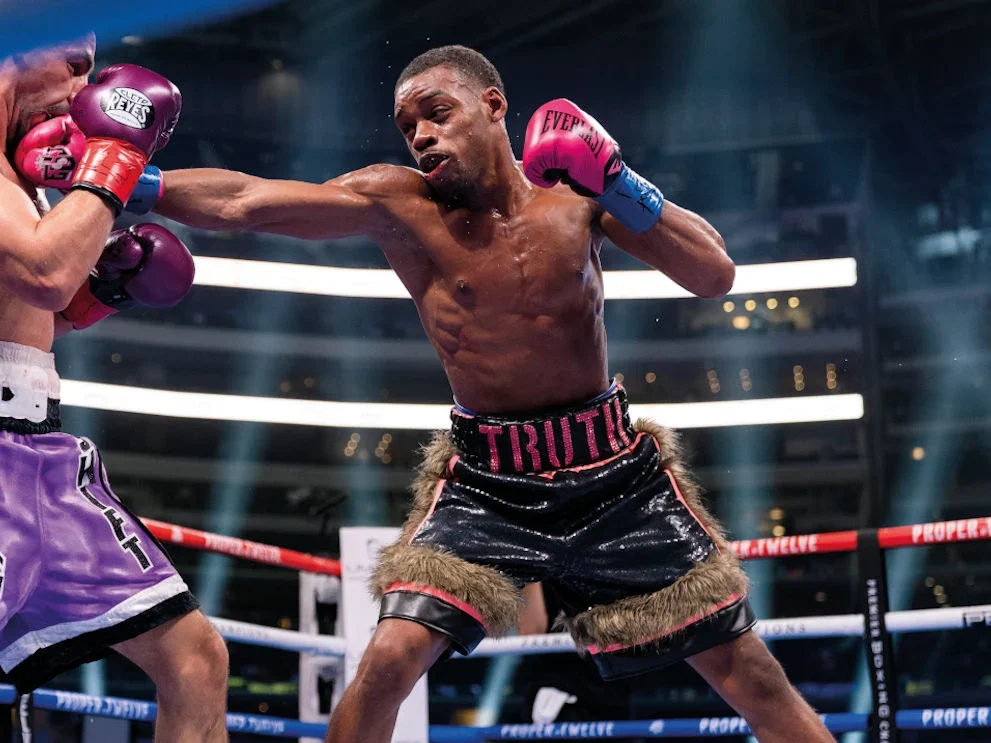How to Dominate the Ring:
Picture this: you’re stepping into the boxing ring, the lights are bright, the crowd is roaring, and your opponent is eyeing you with fierce determination. In this intense moment, your stance is your foundation. It can be the deciding factor between victory and defeat. In this guide, we delve into one of boxing’s most crucial elements – the stance. Understanding and mastering various boxing stances can transform your performance, giving you the edge over your opponent. Let’s explore the different types of stances, their pros and cons, and how to choose the right stance when facing a taller or shorter opponent.
The Orthodox Stance: The Classic Approach

Imagine stepping into the ring for the first time. Your heart pounds with anticipation. Your coach whispers, “Go orthodox, it’s your safest bet.”
The Orthodox stance is the most common stance used in boxing. It involves placing the left foot forward and the right foot back. The left hand is the lead, and the right hand is the rear.
Pros:
- Stability and Balance: This stance provides a strong foundation. As a result, it makes it easier to maintain balance and stability.
- Defensive Advantage: The lead hand is positioned to block or parry incoming punches effectively.
- Powerful Right Cross: The right hand, being the rear hand, can generate significant power in punches like the right cross.
Cons:
- Predictability: Since it is the most common stance, opponents may find it easier to anticipate your moves.
- Limited Angles: The orthodox stance can restrict movement and limit the variety of angles for attack.
The Southpaw Stance: The Left-Handed Marvel

Picture yourself in a match against a fierce rival. You switch to a southpaw stance. Confusion flashes across their face.
The Southpaw stance is the mirror image of the orthodox stance. The right foot is forward, and the left foot is back. Therefore, the left hand is the lead and the right hand is the rear.
Pros:
- Unpredictability: Fewer boxers are accustomed to facing southpaw opponents. This gives you a strategic advantage.
- Angle Advantage: Southpaws can exploit angles that orthodox fighters may find challenging to defend against.
- Strong Jab: The lead right hand can deliver a strong and effective jab.
Cons:
- Defensive Vulnerabilities: Southpaw boxers may find it challenging to defend against orthodox fighters’ strong right hands.
- Footwork Challenges: Maintaining proper foot positioning can be more complex.
The Peek-a-Boo Stance: The Defensive Dynamo

Think of legendary fighters like Mike Tyson. His peek-a-boo stance was his signature. It intimidated opponents with its unique style.
The Peek-a-Boo stance involves keeping the hands high near the face, elbows tucked in, and using a lot of head movement.
Pros:
- High Defense: The hands-up position provides excellent protection for the head and body.
- Close Range Power: Ideal for close-range fighting. It allows for powerful hooks and uppercuts.
- Head Movement: Constant head movement makes it difficult for opponents to land clean shots.
Cons:
- Energy Intensive: The constant movement can be physically demanding.
- Limited Reach: The stance can limit the reach of your punches, making it harder to fight from a distance.
The Philly Shell Stance: The Stylish Defender

Envision yourself channeling Floyd Mayweather. You use the Philly Shell to frustrate and outclass your opponent.
The Philly Shell involves a relaxed stance. The lead shoulder is rolled up to protect the chin. The rear hand is near the chin, and the lead hand is low.
Pros:
- Effective Defense: Excellent for shoulder rolls and counter-punching.
- Energy Efficient: Requires less energy due to its relaxed nature.
- Counter-Punching Opportunities: The stance sets up opportunities for effective counter-punches.
Cons:
- Learning Curve: Mastering the Philly Shell requires significant practice and skill.
- Vulnerable to Body Shots: The low lead hand can leave the body exposed to punches.
Choosing the Right Stance Against Taller and Shorter Opponents

Against Taller Opponents:
- Peek-a-Boo Stance: Use the peek-a-boo stance to get inside and deliver powerful close-range punches.
- Head Movement: Employ head movement to avoid their long reach and stay unpredictable.
Against Shorter Opponents:
- Orthodox Stance: Maintain distance and use your reach advantage with jabs and straights.
- Philly Shell: Use the Philly Shell to counter their attacks and exploit openings.
Additional Tips for Mastering Your Stance
- Footwork: Regardless of your stance, footwork is crucial. Therefore, practice moving smoothly and maintaining balance.
- Adaptability: Be ready to switch stances during a fight to keep your opponent guessing.
- Defense: Always keep your hands up and protect your chin.
- Training: Regularly practice your chosen stance in sparring and drills to build muscle memory.
Conclusion: Finding Your Unique Stance
Every boxer is unique. Finding the stance that suits you best can make a significant difference in your performance. Therefore, experiment with different stances, understand their pros and cons, and adapt your style to your strengths and your opponent’s weaknesses. Remember, the best stance is the one that makes you feel confident and powerful in the ring.
Stay tuned to BoxerTips for more expert advice, training tips, and techniques to take your boxing skills to the next level. Unleash your inner champion and dominate the ring with the perfect stance!




